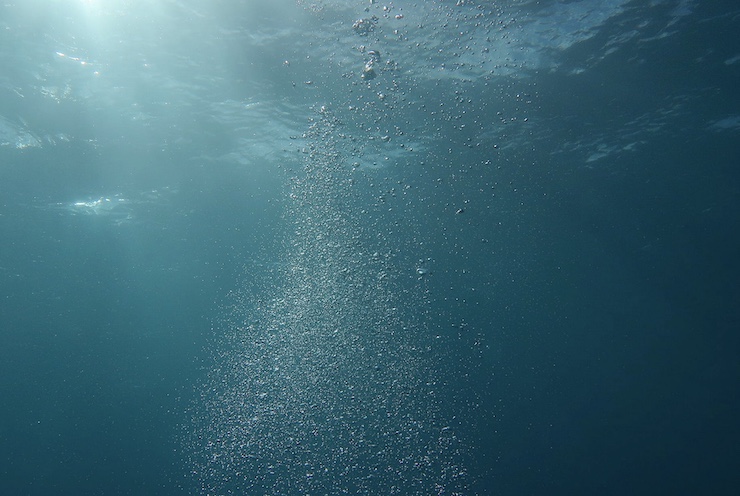Underwater Drone Market is Beginning to Surge

When most people think of drones, they think of a bird-like contraption soaring through the skies like a helicopter. But some drones are going under water to plumb the depths of the world’s oceans and rivers like a submarine. And their missions are just as varied. Underwater drones – or Unmanned Underwater Vehicles (UUVs) as some call them – are conducting video surveillance, gathering data on marine conditions, tracking animal species and even retrieving drowned bodies. Everyone from marine biologists and conservationists to emergency rescue teams and naval warfare planners are beginning to exploit their prospective advantages. And the number and types of underwater drones being produced and sold is escalating rapidly.
Currently, Straits Research estimates the UUV market at roughly $4.6 billion (as of 2021) but the market is expected to nearly triple in size (to over $12.5 billion) by 2030. To be sure, underwater unmanned vehicles are still only 15% of the total drone market currently, their share is steadily rising. For example, while the combined annual growth rate, or CAGR, of the total drone market is roughly 8%, the CAGR for the UUV market is over 11% and will continue to rise in the decades ahead.
As with aerial vehicles, underwater drones can be piloted remotely or can operate autonomously. In recent years, technological improvements, including higher-resolution waterproofed cameras, more functional probing and “gripper” arms, and more sophisticated sonar systems have reduced the time needed to inspect underwater areas or to retrieve submerged items. This has created enormous new opportunities in the underwater market.
One of the main competitive advantages of underwater drones is their ability to replace or supplement human divers, reducing the safety risk but also enhancing operational efficiency. In lakes and rivers, UUVs can probe areas inaccessible to divers and can also operate in dark, dirty and contaminated waters. Some public safety agencies have deployed underwater drones to find submerged vehicles or persons that have drowned. UUVs are also critical for inspecting the base of physical structures like hydroelectric dams, identifying cracks and fissures early that might not otherwise be detected. In oceans and other large bodies of water, underwater drones can track and count schools of fish and monitor their migration and mating patterns.
Undoubtedly, future military applications for underwater drones are being widely anticipated, though most larger submarine-sized drones that might be deployed in intelligence-gathering or active warfare are still in the “dual use” prototype stage. The United States and the UK are the two largest regional markets, and military modernization figures prominently in both countries’ efforts. However, commercial use of smaller underwater drones – especially for oil and pipeline inspections – is also on the rise, especially in the US.
The Asia-Pacific is also coming up fast. China’s military modernization is prompting India and South Korea to acquire their own UUVs for defensive purposes. Another emerging end-user is Australia, which recently acquired 3 prototype UUV submarines from the US defense contractor Anduril Industries. Dubbed the “Ghost Shark,” the drone subs can perform missions autonomously – and stealthily – for up to 10 days along the seafloor at up to 6,000 meters deep.
Anduril officials note that without the need to house a crew, the Ghost Shark has plenty of room for sophisticated sensor and communications equipment. As a result, it can be reprogrammed mid-mission and even converted from military to non-military surveillance use while still deployed at sea.
While UUVs face few regulatory challenges at home, there are a number of thorny regulatory challenges ahead globally. For example, Article 20 of the UN Convention on the Law of the Sea allows for freedom of navigation but strictly speaking, only applies to crewed vehicles that can actually “navigate” and that are considered “ships” — not to autonomously operating drone subs. There are also specific international treaty rules relating to underwater “scientific research equipment,”:which include requirements to mark research stations and vehicles with insignia indicating the state or international organizations to which they belong. And, of course, all such scientific operations are supposed to be for strictly peace-oriented purposes, not for armed combat.
In the future, as UUVs expand, even for strictly research or commercial purposes, these regulatory issues could prove to be major bones of diplomatic contention, especially in arenas like the South China Sea, where major powers are jockeying for position — and advantage.
|